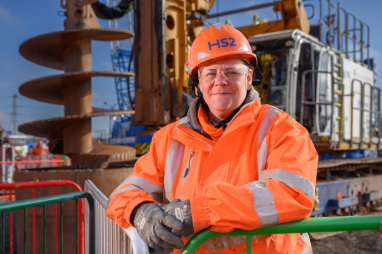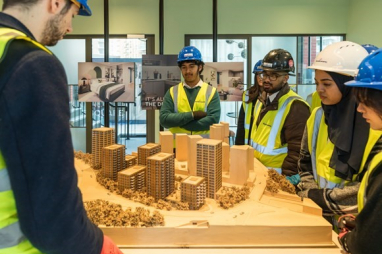- Панама adidas bucket - Ransom by adidas Bluff Lo 'Fairway' - IetpShops
- Manor PHX – Cheap Ietp Jordan Outlet , Костюм спортивний adidas Eqt , Premium Footwear & Streetwear Boutique
- Jordan Trunner Q4 343408-171 - Air LOW Jordan 1 Art Basel Igloo Rust Pink - LOW Jordan LOW Jordan ADG 3 sneakers Schwarz
- Adidas x Pharrell NMD HU Gold - adidas Nizza Platform Mid Parley Almost Blue W Release Date - SBD
- The adidas CRAZY BYW Gets a Luxury Makeover From Bristol Studio - StclaircomoShops - adidas campus adv grey six
- eastbay restock large amount air jordans
- air jordan xxxv cq4227 004
- Miles Morales Shameik Moore Air Jordan 1 Spider Verse
- new air jordan 1 high og osb dian blue chill white cd0463 401
- air jordan 4 og fire red DC7770 160 release details price
- Home
- News and analysis
- Info hubs
- Events
- Video
- Case Studies
- About us
- Magazine
- Advertising
Produced for the industry by the Association for Consultancy and Engineering
Analysis
Securing talent to deliver in 2015

Employers must think big and be creative in their resource planning says Matchtech operations director Grahame Carter
As the fastest growing economy in the G7 the past year has seen growing optimism about the strength of the UK’s recovery. The Organisation for Economic Co-operation and Development predicts that this will continue forecasting GDP growth of 2.7% in 2015 and 2.5% in 2016. Significant public sector investment on projects, notably infrastructure, is also providing a driver for growth.
In his Autumn Statement, the Chancellor announced £466bn in spending as part of the National Infrastructure Plan. This includes £15bn for the strategic road network, £5.8bn for local road maintenance and £2.3bn for flood defences. This, in addition to projects such as Crossrail and HS2, amounts to a sizable investment in the UK’s infrastructure.
"Flexibility on the part of employers would also help to reduce the skills shortage."
While on the surface this is a reason for the infrastructure sector to feel confident in the future, the upcoming General Election on 7th May 2015 does bring with it considerable uncertainty. Few projects are completely safe from a change in governing party. HS2 has cross-party buy-in, but more recent announcements, such as the £15bn road plan, may not get off the ground at all.
This uncertainty makes planning difficult for many businesses in the sector, but regardless of what happens in May, there is wide recognition that the UK’s infrastructure network must be improved to support economic growth. As a result, demand for experienced engineers is expected to continue to grow, regardless of where the investment comes from. And herein lies the rub. While the sector is experiencing strong growth, it has a dwindling pool of engineering talent to draw on to build the infrastructure being commissioned.
In Matchtech’s latest Confidence Index, we surveyed more than 500 engineers in the infrastructure sector asking what policy initiatives they would like to see in the political parties’ manifestos to help drive growth. Two fifths (39%) said increasing the level of infrastructure investment as a foundation for future economic growth was the number one priority initiative, followed by greater investment in STEM (Science, Technology, Engineering, and Mathematics) apprenticeship schemes, also chosen by 39%, and a clear strategy for future investment in UK energy infrastructure and clarity on the energy mix (e.g. renewables vs. fossil fuels) chosen by 36%.
"There is recognition among politicians that action has to be taken to build and maintain the STEM skills base in the UK"
Engineers want to see investment in infrastructure continue but also recognise they have to see a parallel investment in skills and training if the UK is to build and maintain the talent it needs. Many current projects are already suffering from growing skills shortages.
There is recognition among politicians that action has to be taken to build and maintain the STEM skills base in the UK, more recently seen in Ed Miliband’s statement that a Labour government will seek to create an extra 400,000 engineers by 2020 by encouraging young people to study STEM subjects and expanding apprenticeship schemes.
However, while useful, solutions such as this risk being too long term in scope and need to be coupled with incentives that encourage graduates and qualified engineers to choose a career in the sector now and stay committed to it. Attracting new people into the industry is not beneficial if you continue to lose more experienced staff.
For those currently working in engineering, there is likely to be a rich choice of jobs in the infrastructure sector in 2015. While employers will reap the rewards of the much needed investment, they will also be feeling anxious about delivering what they need to when there is such fierce competition for experienced engineers.
This is where resource planning will form an integral part of their success in 2015. Employers must think ‘big’ when addressing their future recruitment needs, looking to engineers from other sectors and thinking about how their skills can be transferred and utilised.
Flexibility on the part of employers would also help to reduce the skills shortage. Greater efforts to accommodate working parents, and help long-distance commuters to maintain a better work-life balance (such as home working) would enable more engineers to provide a wider range of roles.
Providing a working environment that helps those approaching retirement or recently retired is also essential. These experienced workers provide an invaluable source of information that can be drawn upon to help train less experienced engineers, in preparation for the workload ahead.
By thinking creatively, solutions can be found to the recruitment pressures that employers face this year, and when they meet those needs they will succeed, in what is a very exciting time for the infrastructure sector.





